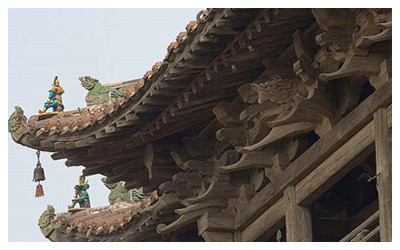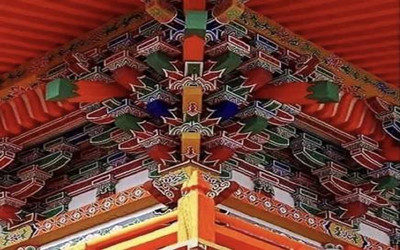Skype: neodalle-travel
Tel: +86 135 7447 2266
E-mail: sales@visitaroundchina.com

 Dougong (斗拱dǒugǒng),also known as Bracket Set or Arch, is one of the Wooden Structure Parts in Ancient Architecture of China. Bracketing inserted between the top of a column and a crossbeam, it is one of most important elements in traditional Chinese architecture and also a unique structural element of interlocking wooden brackets.
Dougong (斗拱dǒugǒng),also known as Bracket Set or Arch, is one of the Wooden Structure Parts in Ancient Architecture of China. Bracketing inserted between the top of a column and a crossbeam, it is one of most important elements in traditional Chinese architecture and also a unique structural element of interlocking wooden brackets.  inclined wood is called "Ang",and "arch" is their general name. Usually it is placed among the pillar head ,pillar forehead and face of the house to prop up a beam and pick up eaves, and it also has a decorative function. It is made up of the square wood, the short bow wood and the long inclined wood, mixing in length and breadth layer upon layer and pursuing a layer to pick outwardly to form a pad base which is to descend.
inclined wood is called "Ang",and "arch" is their general name. Usually it is placed among the pillar head ,pillar forehead and face of the house to prop up a beam and pick up eaves, and it also has a decorative function. It is made up of the square wood, the short bow wood and the long inclined wood, mixing in length and breadth layer upon layer and pursuing a layer to pick outwardly to form a pad base which is to descend. Ask Questions ?
Ask Questions ?